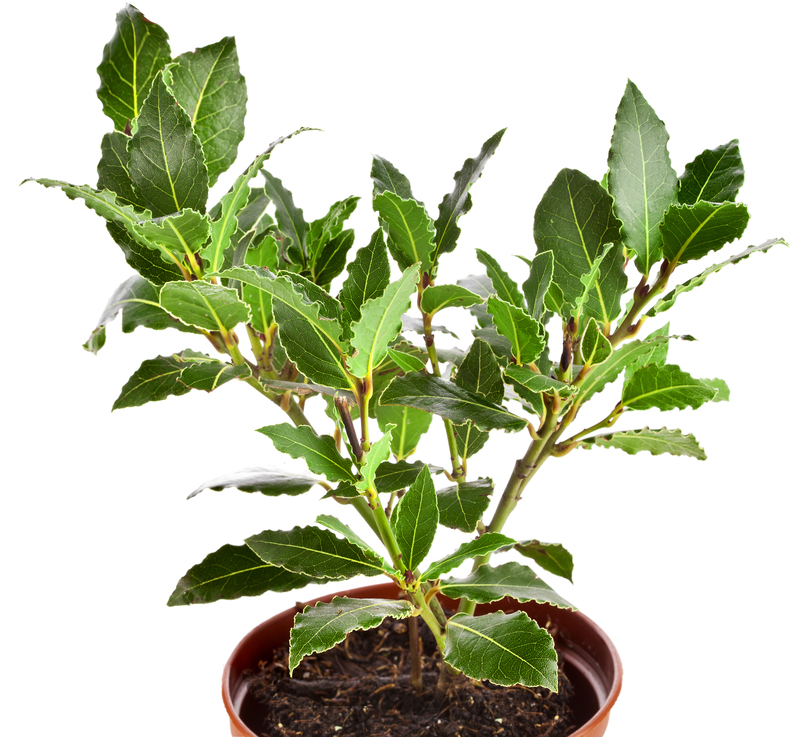A Winter Guide to Protecting Your Cherished Garden Plants
Posted on 24/09/2025
A Winter Guide to Protecting Your Cherished Garden Plants
Winter brings its own set of challenges for garden lovers and plant enthusiasts. As temperatures drop and frost sets in, your treasured plants require extra attention and proactive steps to ensure they emerge healthy and vibrant in spring. Whether you are a seasoned horticulturist or a novice home gardener, protecting your cherished garden plants during winter is vital for their survival and future growth. This comprehensive guide will equip you with practical strategies and expert advice to safeguard your precious greenery from the harsh winter elements.
Why Winter Protection for Garden Plants Matters
Understanding the significance of winter care is the first step toward a thriving landscape come spring. Extreme cold, frost, snow, and fluctuating temperatures can cause physical and physiological stress to plants. Without proper measures, even robust species can suffer winter damage such as:
- Root injury due to soil freezing
- Branch breakage under the weight of ice or snow
- Desiccation (drying out) from chilly winds
- Death of tender shoots and buds
Most importantly, cherished garden plants--especially those not native to your region--are more vulnerable than you might realize. Implementing the right winter plant protection practices increases their resilience and saves you financial and emotional investment in replacements.

Assessing Your Plants' Winter Vulnerability
To effectively safeguard your winter garden plants, start by identifying which plants require attention. Consider the following factors:
- Plant Type: Evergreens, succulents, young saplings, and tropical/mediterranean varieties are more susceptible to cold.
- Hardiness Zone: Check the USDA Hardiness Zone map to determine your garden's average winter lows versus your plant's tolerance levels.
- Location: Is your plant in a sheltered microclimate or exposed to wind and sun?
- Soil Drainage: Poor drainage exacerbates root freezing; raised beds or pots offer some protection.
Once you assess each plant's risk, you can tailor your winter plant care strategies for maximum effectiveness.
Top Methods for Winterizing Your Cherished Garden Plants
1. Mulching: Nature's Insulating Blanket
Mulch is an exceptional material for garden plant protection in winter. Applying a thick layer (2-4 inches) of organic mulch--like straw, bark, shredded leaves, or compost--around plant bases serves multiple purposes:
- Stabilizes soil temperature and prevents rapid freeze-thaw cycles
- Reduces root exposure to severe cold and wind
- Retains soil moisture, minimizing desiccation
- Suppresses weed growth and provides nutrients as it breaks down
Remember: Keep mulch a few inches away from stems to avoid rot or rodent damage.
2. Covering Plants: Cloaks of Protection
The use of physical barriers can dramatically improve your winter plant survival rate:
- Frost Cloths & Blankets: Lightweight, breathable fabrics draped over shrubs, veggies, and tender perennials offer crucial insulation at night.
- Burlap Wraps: For evergreens, conifers, and ornamentals, burlap shields foliage from windburn while allowing air flow.
- Plastic Domes & Cloches: Ideal for individual small plants, these provide a mini-greenhouse effect but must be ventilated on sunny days to avoid overheating.
Secure all covers with stakes or stones to prevent them from blowing away. Remove covers in the morning when temperatures rise to prevent moisture-related diseases.
3. Water Wisely Before Freeze Arrives
While it may seem counterintuitive, proper watering before the ground freezes helps plants withstand winter stress:
- Moist soil retains heat better than dry soil.
- Deep watering encourages roots to grow downward away from freezing surface layers.
- Well-hydrated evergreens are less likely to suffer from desiccation.
Tip: Avoid overwatering once the freeze sets in, as waterlogged soil can cause roots to rot.
4. Pruning: Knowing What and When
Pruning is a crucial winter garden maintenance practice, but timing is everything:
- Remove dead, damaged, or diseased wood before winter storms to prevent breakage.
- Hold off on major pruning until late winter or early spring to avoid stimulating new growth that will perish in the cold.
Prune wisely to promote plant health and shape while reducing wind resistance during harsh weather.
5. Anti-Desiccant Sprays and Protective Barriers
Harsh winter winds can draw moisture from leaves faster than roots can replace it--a common problem for evergreens and broadleaf shrubs:
- Anti-desiccant sprays (also called "wilt proofers") create a protective coating on foliage, reducing water loss.
- For sensitive or valuable specimens, consider constructing a windscreen using burlap, wood, or shade cloth.
Caring for Potted and Indoor Plants in Winter
Container plants face extra risks because their roots are more exposed to cold air and temperature swings. To protect cherished potted garden plants:
- Move pots against a south-facing wall or into a greenhouse for added warmth.
- Insulate containers with bubble wrap, straw, or mulch around the pot.
- Reduce watering and avoid fertilizing until new growth appears in spring.
- Check containers for drainage; empty saucers to prevent root rot.
When possible, bring especially delicate or tropical plants indoors. Gradually acclimate them by adjusting humidity and light conditions to prevent shock.
Special Considerations: Snow, Ice, and Extreme Frost
Snow Can Be Beneficial--Most of the Time
An insulating snow layer can benefit plants by maintaining constant soil temperature and protecting roots. However, heavy or wet snow can crush branches and stems:
- Gently shake or brush off snow from shrubs and small trees after each storm to prevent breakage.
- Never use hot water or force; let any ice melt naturally.
Dealing with Ice Damage
Freezing rain and ice storms pose serious threats to your garden:
- Steer clear of using salt or harsh deicers near plantings.
- Support vulnerable branches with stakes or ties before storms arise.
- Promptly remove broken branches post-storm to discourage disease and pests.
Extra Steps for Truly Cherished and Rare Plants
Double Layer Protection
For rare, expensive, or deeply sentimental plants, combine several methods:
- Wrap the base with burlap and add loose mulch above and around the root zone.
- Set up temporary greenhouses or cold frames to shield from extreme cold snaps.
- Employ heat sources such as holiday lights (non-LED) or heating cables for the most sensitive plants.
Label your precious plants for easy identification under snow, reducing any accidental damage during seasonal maintenance.
Common Winter Garden Plant Protection Mistakes to Avoid
- Waiting too long to install protection; plan ahead before the first frost hits.
- Using plastic directly on foliage--it can trap moisture and cause rot.
- Neglecting container drainage, leading to freeze-thaw root damage.
- Forgetting to check covers, allowing pests or mould to accumulate.
- Ignoring local weather reports and zone recommendations.
Eco-Friendly and Sustainable Winterizing Techniques
Embrace sustainable gardening practices while safeguarding your winter garden plants:
- Reuse organic materials like leaves, compost, or pruned branches for mulch and cover.
- Opt for biodegradable wraps instead of synthetic plastics.
- Build windbreaks with recycled wood or natural debris.
- Choose hardy, native plant varieties that require less intervention for future winters.
The Importance of Post-Winter Care for Garden Plants
Winter protection is only the first part of nurturing your cherished garden plants. As spring approaches:
- Remove covers, mulch, and insulation gradually as the threat of frost diminishes.
- Inspect plants for winter damage and prune or treat as needed.
- Apply balanced fertilizer to encourage healthy regrowth and blossoming.
- Monitor soil moisture and begin regular watering schedules.

Frequently Asked Questions about Winter Plant Protection
- When should I start winterizing my garden?
Begin preparations in late autumn, before the first hard frost. This timing varies depending on your hardiness zone and local climate. - Can I use mulch on all garden plants?
Most perennials, shrubs, and trees benefit from mulching, but be cautious with plants susceptible to crown rot. Always keep mulch an inch or two away from stems and trunks. - Is it necessary to water plants in winter?
Yes, if there are dry spells and the ground is not frozen. Water sparingly but thoroughly to maintain root moisture. - Which fabrics are best for covering plants?
Use breathable materials like frost cloth, old sheets, or burlap. Avoid plastic as it can overheat or trap moisture if placed directly on plants.
Conclusion: Preserve and Cherish Your Garden Year-Round
Your garden is not only an investment but a source of joy and beauty throughout the year. A thoughtful approach to winter plant protection will pay dividends in lush spring growth and decreased losses. From effective mulching and covering to watering and pruning, prepare now to ensure your garden's health in the colder months. By combining best practices with gentle, attentive care, you can protect your cherished garden plants and enjoy their return for many seasons to come.
If you found this guide helpful, share it with fellow garden enthusiasts and explore more related articles on winter plant care to keep your landscape thriving, no matter the weather!

